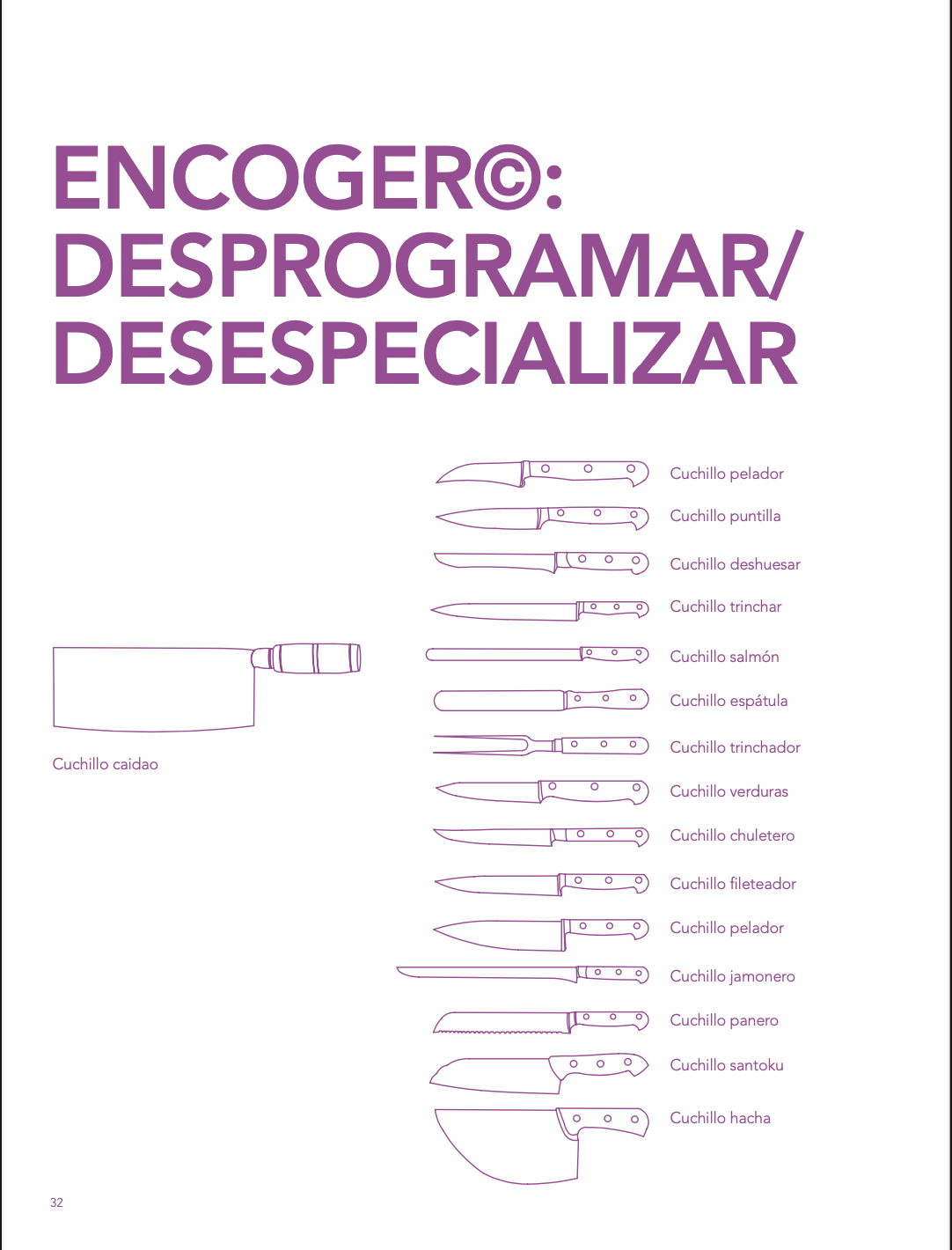ENCOGER©: DESPROGRAMAR/ DESESPECIALIZAR
Barra lateral del artículo

Palabras clave:
Contenido principal del artículo
Resumen
Desde el movimiento Encoger©, nos proponemos construir una nueva teori arquitectonica asociada a las ideas de decrecimiento economico. Basandonos en verbos que funcionan como vectores teoricos —densi- ficar, desnormalizar, inacabar, secluir, implosionar, descarnar y desinflar, entre otros— buscamos definir una disciplina contrapuesta a la del movimiento moderno. “Desespecializar”, que aqui renombraremos como “desprogramar”, es uno de los terminos usados. Con el intentamos desmontar la relacion indisoluble entre espacios y usos, que obligaba a desmantelar una arquitectura cuando el programa cambiaba. Pero, ade- mas, el articulo ahonda en otra linea, proponiendo la existencia de unas estructuras funcionales previas que ya presuponen una organizacion funcional del proyecto antes de las primeras decisiones formales.
Detalles del artículo
Materia Arquitectura proporciona acceso inmediato y gratuito a todos los contenidos de esta edición electrónica, publicada simultáneamente con la edición impresa. Materia Arquitectura no cobra honorarios a los autores por ningún concepto.
Todos los contenidos de esta edición electrónica se distribuyen bajo licencia Creative Commons de “Atribución-Copartirigual 4.0 Internacional” (CC-BY-SA).
La licencia Creative Commons permite el acceso libre e inmediato al contenido y permite que cualquier usuario lea, descargue, copie, distribuya, imprima, busque o genere enlaces a los textos completos de los artículos, permitiendo también que estos puedan ser rastreados para indexarlos, pasarlos como datos a software o usarlos para cualquier otro propósito legal. Asimismo, la licencia otorga derechos de uso a quienes a su vez utilicen una licencia abierta (Creative Commons o equivalente).
Los derechos de los textos y las imágenes publicadas pertenecen a sus autores, quienes otorgan a Materia Arquitectura la licencia para su uso. La gestión de los permisos y la autorización de publicación de las imágenes (o de cualquier material) que contenga derechos de autor y sus consecuentes derechos de reproducción en esta publicación es de exclusiva responsabilidad de los autores de los artículos.
Toda vez que mencionen su origen, los autores son libres de distribuir sus artículos por otros medios. Cualquier reproducción total o parcial del material deberá citar su procedencia.
Descargas
Citas
CHOMSKY, N. (1957). Syntactic Structures. La Haya, Países Bajos: Mouton. GEORGESCU-ROEGEN, N. (1971). The Entropy Law and the Economic Process.
Cambridge, MA: Harvard University Press.
JEVONS, W. S. (1865). The Coal Question: An Inquiry Concerning the Progress of the Nation, and the Probable Exhaustion of our Coal-mines. Londres, Inglaterra: Macmillan and Co.
KENJI LÓPEZ-ALT, J. (2010). Equipment: How to Choose a Meat Cleaver. Recuperado de Serious Eats: www.seriouseats.com/2010/08/how-to-choose-buy-care-for-a- meat-cleaver.html
LATOUCHE, S. (2003). Pour une societe de decroissance. Francia: Le Monde Diplomatique.
LATOUCHE, S. (2007). Petit traité de la décroissance sereine. París, Francia: Mille et Une Nuits.
LE CORBUSIER. (1923). Vers une architecture. París, Francia: G. Cres et Cie.
LE CORBUSIER, & JEANNERET, P. (1927). Les cinq points d’une nouvelle architecture.
L’Architecture Vivante, (Automne-hiver).
LONGHI, L. (2008). Intervención en las ruinas del Teatro Municipal de Lima: Lima,
Perú. ARQ, (68), 54–59.
MINGUET MEDINA, J. (2017). Obliteración en la arquitectura del tardocapitalismo
(Tesis Doctoral, Universidad de Málaga). Málaga, España: Universidad de Málaga.
MONEO, R. (1982). Sobre el concepto de tipo en arquitectura: textos de arquitectura. Madrid, España: ETSAM.
OLIVEROS RUIZ, A. (2007). Agnosia visual. En J. Peña-Casanova (Dir.), Neurología de la conducta y neuropsicología (pp. 157–184). Madrid, España: Editorial Médica Panamericana.
OSWALT, P. (Ed.). (2005). Shrinking Cities. Volume 1. Ostildern-Ruit, Alemania: Kulturstiftung des Bundes.
OSWALT, P. (Ed.). (2006). Shrinking Cities. Volume 2. Ostildern-Ruit, Alemania: Kulturstiftung des Bundes.
SORIANO, F. (2017). El museo de todos los museos. The museum of all museums. ARQ, (95), 96–105.
SORIANO, F., & SANTACANA, A. (Eds.). (2011). Postproducciones. Fisuras, (16), 38–55. SORIANO, F., & URZÁIZ, P. (2014). Grammati©als. Madrid, España: Fisuras de la
Cultura Contemporánea.
SULLIVAN, L. H. (1896). The Tall Office Building Artistically Considered. Lippincott’s
Magazine, (Marzo), 403–408.
Tisspas: taller para la innovación social y el desarrollo de servicios y productos arquitectónicos sostenible. (2010). Murcia, España: Observatorio del Diseño y la Arquitectura.
WILSON, B. (2013). La importancia del tenedor: historias, inventos y artilugios de la cocina. Madrid, España: Turner.
Artículos más leídos del mismo autor/a
- Federico Soliano, Dolores Palacios, Shrink©: Deprogram/Despecialize , Materia Arquitectura: Núm. 18 (2018): Materia Arquitectura 18 (Diciembre/December 2018)